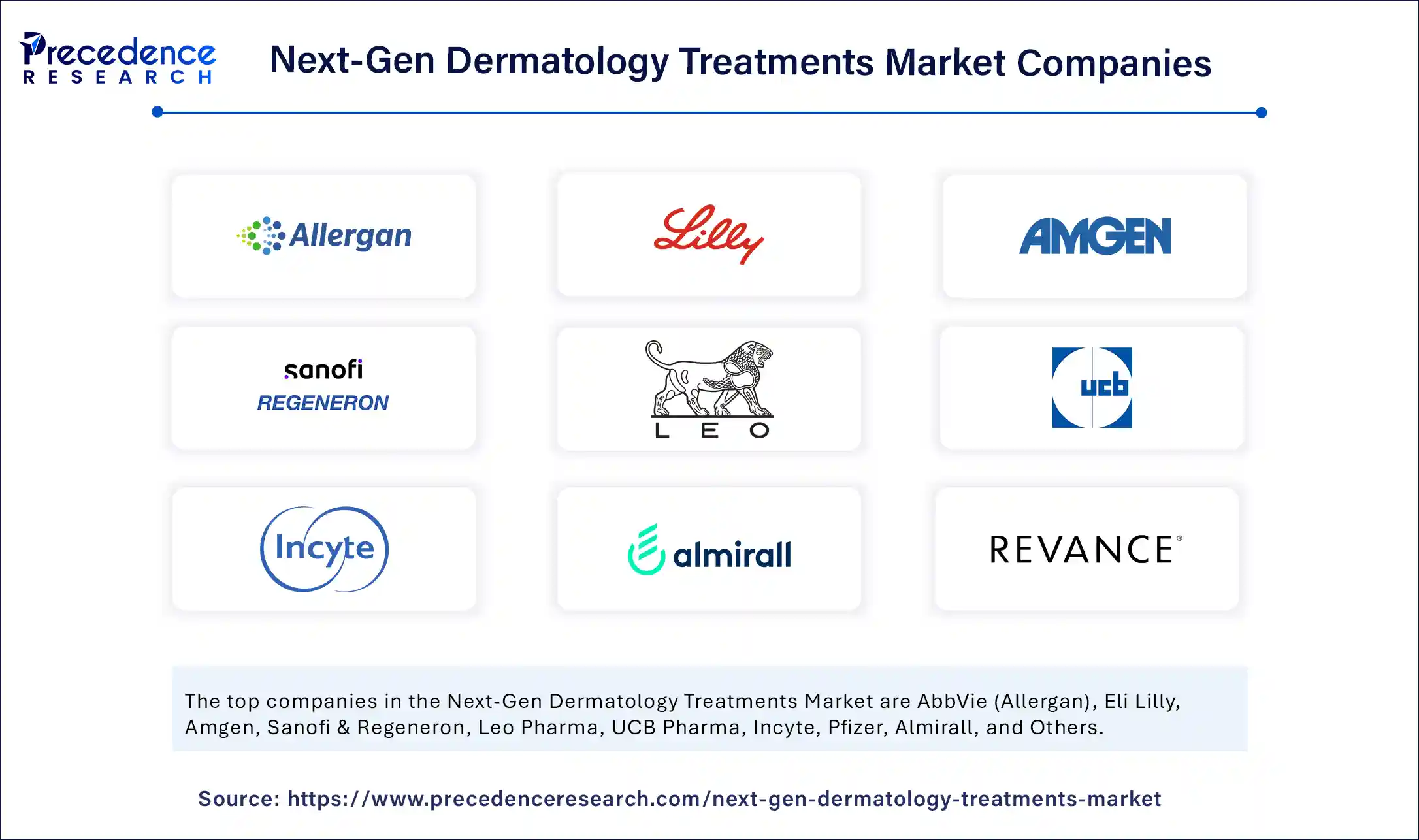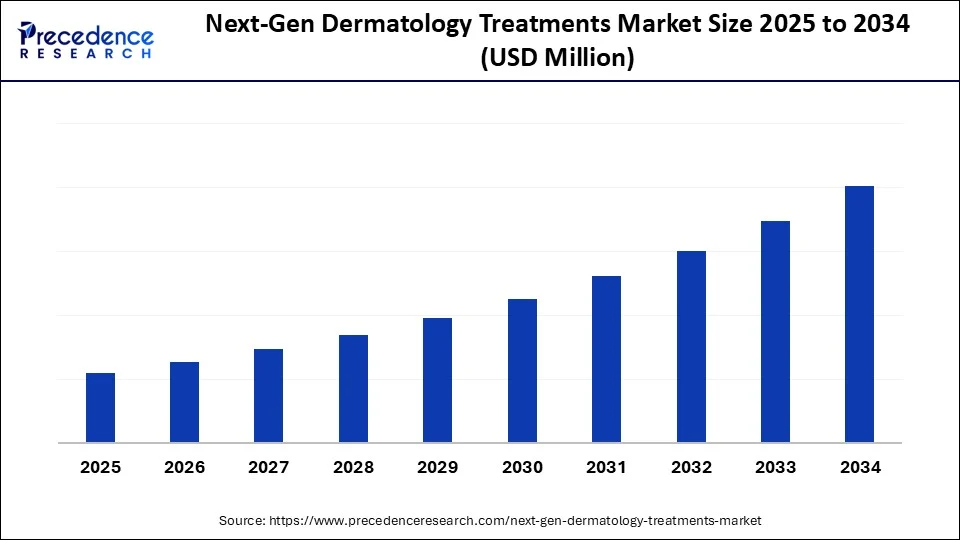Next-Gen Dermatology Treatments Market Outlook 2025 to 2034
The next-gen dermatology treatments market is on the brink of transformation, fueled by innovative biologics, AI diagnostics, and personalized skincare solutions. These advancements are set to redefine dermatological care as we know it, particularly through 2025 to 2034. Rising consumer demand for tailored skincare, coupled with an increasing awareness of aesthetics, is propelling market growth. This evolution is further supported by advancements in targeted therapies and minimally invasive procedures, which promise to enhance patient outcomes.
Key Insights into the Next-Gen Dermatology Treatments Market
- Market Leadership: North America dominated the market in 2024, while the Asia-Pacific region is anticipated to witness the fastest growth rate from 2025 to 2034.
- Segment Performance: The biologics and targeted therapies segment held the largest market share (40%) in 2024, with energy-based devices expected to show significant growth in the coming years.
- Indication Insights: Psoriasis and atopic dermatitis accounted for the major market share, whereas alopecia areata and vitiligo are projected to experience notable growth.
- Delivery Platforms: The injectables segment contributed the most to market share in 2024, while device-based non-invasive systems are expected to grow impressively.
- End User Dynamics: Dermatology clinics & MedSpas captured the largest share, with hospitals and skincare departments poised for rapid growth.
The Impact of AI on Dermatology Treatments
Artificial Intelligence is revolutionizing the landscape of dermatology treatments by enhancing diagnostics and patient care. For instance, Europe’s first autonomous AI system for skin cancer detection, DERM, has received the Class III CE marking. Deployed across 26 NHS sites, DERM boasts a 99.8% diagnostic accuracy, dramatically reducing treatment wait times and unnecessary referrals.
AI innovations also include:
- Dermoscopy tools that rival expert assessments for benign conditions.
- Models like DermDiff and DermDiT that create diverse skin images for equitable diagnostic accuracy across skin tones.
- Apps like Miiskin offer real-time monitoring for chronic conditions such as psoriasis, changing the way care is delivered.
Market Overview
The next-gen dermatology treatments market encompasses a spectrum of innovative therapies, including:
- Biologics
- Regenerative medicine
- Energy-based devices
- Digital technologies
This market shift is fueled by the rising prevalence of chronic skin disorders, the increasing demand for aesthetic treatments, and technological advancements in treatment delivery.
Growth Factors in the Next-Gen Dermatology Treatments Market
- Prevalence of Skin Diseases: Increased cases of eczema, psoriasis, and skin cancer necessitate advanced treatments.
- Technological Innovation: Emerging technologies like AI and laser therapies offer improved treatment options that are efficient and less invasive.
- Aesthetic Demand: A growing focus on skin health and cosmetic procedures is pushing demand for innovative dermatological solutions.
- Biologics & Personalized Medicine: The shift toward biologics enables more effective treatments tailored to individual needs.
Market Scope
Report Details:
- Dominating Region: North America
- Fastest Growing Region: Asia-Pacific
- Timeline: 2025 to 2034
- Covered Segments: Treatment Type, Indication, Delivery Platform, End User, and Region
- Regions Covered: North America, Europe, Asia-Pacific, Latin America, Middle East & Africa
Challenges Facing the Market
Regulatory Uncertainty
Regulatory uncertainties, particularly regarding advanced manufacturing technologies, pose significant obstacles. The FDA’s lack of established metrics for evaluating initiatives creates uncertainty that hampers adoption and slows market growth.
Barriers to Innovation
Lengthy approval processes for new therapies can impede progress. A 2023 report by the U.S. Government Accountability Office identified regulatory risks as a barrier to the adoption of advanced technologies.
Opportunities for Gene-Silencing Therapies
RNA-based therapies, especially small interfering RNA (siRNA) platforms, present a promising frontier in dermatology. AbbVie and ADARx Pharmaceuticals are at the forefront, collaborating to develop siRNA treatments for conditions like psoriasis, moving toward molecular management of skin diseases.
Treatment Type Insights
Dominance of Biologics & Targeted Therapies
The biologics and targeted therapies segment dominated the market in 2024 due to its precision in targeting immune-mediated skin diseases. Increased FDA approvals and patient demand for effective treatments play pivotal roles in the segment’s growth.
Emerging Energy-Based Devices
Energy-based devices are expected to flourish, primarily owing to their non-invasive applications in skin rejuvenation and acne treatments. Advanced technologies are streamlining this segment’s growth.
Indication Insights
Psoriasis & Atopic Dermatitis Focus
The psoriasis and atopic dermatitis segment continues to lead, supported by the efficacy of biologics and targeted therapies. New treatments, like IL-23 inhibitors, are improving patient circumstances worldwide.
Regional Insights
North America: The Market Leader
North America boasts the largest market share due to early adoption of advanced biologics, aesthetic preferences, and heightened skin care awareness. The FDA’s strong regulation further supports innovative treatment developments.
Asia-Pacific: The Fastest-Growing Region
The Asia-Pacific sector is expected to grow rapidly, driven by advancements in cosmetic dermatology and burgeoning medical tourism. Countries like South Korea and Japan are at the forefront, enhancing their R&D capabilities.
Key Players in the Next-Gen Dermatology Treatments Market
The next-gen dermatology treatments market comprises major industry players, including:
- AbbVie (Allergan)
- Eli Lilly
- Amgen
- Pfizer
- L’Oréal Active Cosmetics

Recent Developments
- FAWN Launch: In July 2025, Dr. Ashley Magovern introduced FAWN, focusing on effective skincare solutions for teenagers.
- Neuromodulators Clinical Trials: Clear Dermatology launched trials for long-lasting solutions in July 2025.
- L’Oréal Advances: At the Viva Technology Paris 2024, L’Oréal showcased AI-driven initiatives in dermatology.
Segments Covered in the Report
- Treatment Types: Biologics, Energy-Based Devices, Regenerative Therapies, Medical Aesthetics
- Indications: Psoriasis, Alopecia Areata, Acne, Melasma
- Delivery Platforms: Injectables, Topical Systems, Non-invasive Devices
- End Users: Clinics, Hospitals, Home Use
- Regions: North America, Asia-Pacific, Europe, Latin America, Middle East & Africa
The future of dermatology is promising, with rapid technological advancements paving the way for innovative treatments that cater to diverse patient needs. As the next-gen dermatology treatments market expands, stakeholders are urged to leap into this evolving landscape to harness the opportunities that lie ahead. For further insights, explore industry reports from market leaders.


